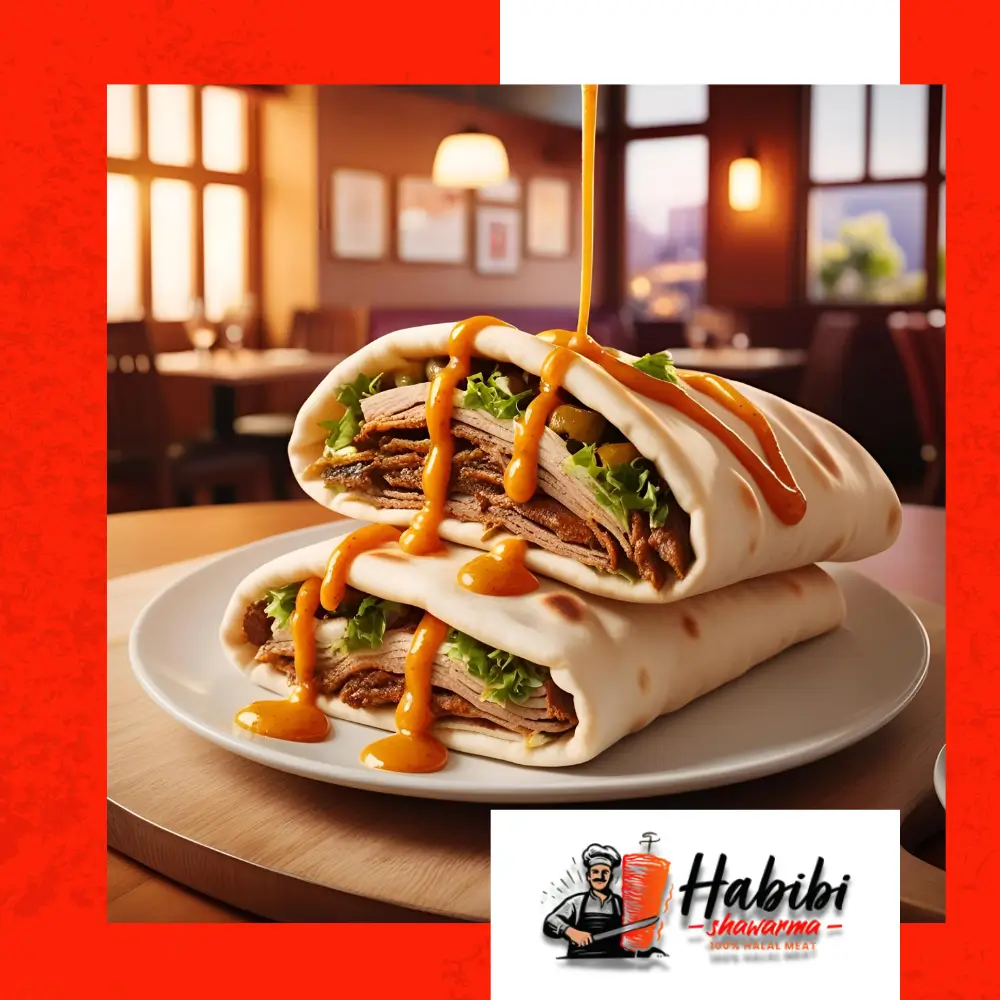There’s something almost hypnotic about the sight of shawarma slowly spinning on a vertical rotisserie, its crispy edges sizzling as it’s shaved off into warm pita. This iconic image isn’t just for show—it’s an essential part of what makes Mediterranean shawarma taste so good. From flavor to texture and tradition, here’s why a rotisserie is the best way to prepare authentic shawarma.
What Is Shawarma?
Shawarma is a traditional Middle Eastern and Mediterranean street food made by layering seasoned slices of meat—typically lamb, beef, chicken, or turkey—onto a vertical spit. As the meat slowly roasts, it’s sliced off and served in flatbread with fresh vegetables, pickles, and sauces like tahini or garlic toum.
While there are many ways to cook meat, the vertical rotisserie is what gives shawarma its unique, mouthwatering profile. Let’s explore why this method is so important.
The Rotisserie Advantage: Even Cooking, All Day Long
The most defining feature of shawarma preparation is the vertical rotisserie. This technique ensures that the meat cooks slowly and evenly from the outside in. As the spit rotates, the outer layer of meat crisps up and caramelizes from direct heat, while the inner meat stays moist and juicy thanks to continuous self-basting from the juices above.
- Consistent texture: The meat develops a crispy crust while remaining tender inside.
- Self-basting: Natural juices drip downward, keeping the meat moist and flavorful.
- Flavor layering: Each slice delivers complex taste from hours of slow-roasting.
This method makes rotisserie-cooked shawarma richer and more satisfying than quick-cooked alternatives like pan-searing or grilling alone.
Why Rotisserie Enhances Flavor in Shawarma
Authentic shawarma meat is marinated for hours—sometimes overnight—with a flavorful blend of Middle Eastern spices. Common ingredients include cumin, coriander, paprika, turmeric, garlic, cinnamon, and cardamom, along with acidic components like lemon juice or vinegar.
The slow, gentle rotation allows those spices to cook into the meat gradually without burning or drying out. Each slice cut from the outer edge carries the full essence of the shawarma marinade—rich, smoky, tangy, and aromatic.
Vertical vs. Horizontal Cooking: What’s the Difference?
While it’s possible to make shawarma at home using an oven, stovetop, or grill, these methods just don’t replicate the same flavor or texture. Here’s how rotisserie cooking compares:
| Cooking Method | Flavor | Texture | Juiciness |
|---|---|---|---|
| Vertical Rotisserie | Deep, smoky, layered | Crispy edges, tender interior | Very juicy, self-basting |
| Grill or Pan | Grilled flavor, less complexity | Evenly cooked, but less crisp | Can dry out easily |
| Oven Roast | Good spice retention | Soft, often lacks crisp edges | Needs careful monitoring |
While homemade versions can be delicious, nothing beats the authenticity of a slowly rotating spit of shawarma.
The Cultural Significance of Shawarma Rotisseries
In many Mediterranean cities, the spinning rotisserie is a symbol of hospitality and tradition. The method itself dates back centuries, evolving from the original Turkish doner kebab. As it spread across the Levant and beyond, each region adapted the spices and sauces—but the rotisserie stayed constant.
From Lebanese shawarma shops to Egyptian street stalls, the slow spin of roasting meat remains a ritual that brings communities together around one delicious meal.
Can You Replicate Rotisserie Shawarma at Home?
Don’t have a vertical spit at home? Don’t worry. While a commercial-style rotisserie gives the most authentic result, you can still mimic the effect by stacking marinated meat on skewers and cooking them upright in the oven, or even using a countertop rotisserie.
For home cooks, try this approach:
- Marinate chicken or beef for at least 8 hours.
- Stack the slices tightly on metal skewers (or a vertical roasting rack).
- Roast at a high temperature (around 400°F/200°C), rotating halfway if needed.
- Slice the meat thin and serve in pita wraps with traditional shawarma toppings.
While it won’t match a street-side shawarma cart exactly, the flavor will still be bold and delicious.
Final Thoughts
There’s a reason why shawarma has remained a staple of Mediterranean cuisine for generations—the rotisserie cooking method brings out the best in every ingredient. From the spice-rich marinade to the crispy yet juicy texture, rotisserie-cooked shawarma is an experience as much as it is a meal.
Whether you’re enjoying a shawarma wrap in a bustling food market or recreating it in your kitchen, now you know: it’s the slow, careful spin on the rotisserie that makes all the difference.
READ MORE:
Traditional Marinades for Mediterranean Shawarma: What Makes Them Special?

